New Haven Line
| New Haven Line | |||||||||||||||||||||||||||||||||||||||||||||||||||||||||||||||||||||||||||||||||||||||||||||||||||||||||||||||||||||||||||||||||||||||||||||||||||||||||||||||||||||||||||||||||||||||||||||||||||||||||||||||||||||||||||||||||||||||||||||||||||||||||||||||||||||||||||||||||||||||||||||||||||||||||||||||||||||||||||||||||||||||||||||||||||||||||||||||||||||||||||||||||||||||||||||||||||||||||||||||||||||||||||||||||||||||||||||||||||||||||||||||||||||||||||||||||||||||||||||||||||||||||||||||||||||||||||||||||||||||||||||||||||||||||||||||||||||||||||||||||||||||||||||||||||||||||||||||||||||||||||||||||||||||||||||||||||||||||||||||||||||||||||||||||||||||||||||||||||||||||||||||||||||||||||||||||||||||||||||||||||||||||||||||||||||||||||||||||||||||||||||||||||||||||||||||||||||||||||||||||||||||||||||||||||||||||||||||||||||||||||||||||||||
|---|---|---|---|---|---|---|---|---|---|---|---|---|---|---|---|---|---|---|---|---|---|---|---|---|---|---|---|---|---|---|---|---|---|---|---|---|---|---|---|---|---|---|---|---|---|---|---|---|---|---|---|---|---|---|---|---|---|---|---|---|---|---|---|---|---|---|---|---|---|---|---|---|---|---|---|---|---|---|---|---|---|---|---|---|---|---|---|---|---|---|---|---|---|---|---|---|---|---|---|---|---|---|---|---|---|---|---|---|---|---|---|---|---|---|---|---|---|---|---|---|---|---|---|---|---|---|---|---|---|---|---|---|---|---|---|---|---|---|---|---|---|---|---|---|---|---|---|---|---|---|---|---|---|---|---|---|---|---|---|---|---|---|---|---|---|---|---|---|---|---|---|---|---|---|---|---|---|---|---|---|---|---|---|---|---|---|---|---|---|---|---|---|---|---|---|---|---|---|---|---|---|---|---|---|---|---|---|---|---|---|---|---|---|---|---|---|---|---|---|---|---|---|---|---|---|---|---|---|---|---|---|---|---|---|---|---|---|---|---|---|---|---|---|---|---|---|---|---|---|---|---|---|---|---|---|---|---|---|---|---|---|---|---|---|---|---|---|---|---|---|---|---|---|---|---|---|---|---|---|---|---|---|---|---|---|---|---|---|---|---|---|---|---|---|---|---|---|---|---|---|---|---|---|---|---|---|---|---|---|---|---|---|---|---|---|---|---|---|---|---|---|---|---|---|---|---|---|---|---|---|---|---|---|---|---|---|---|---|---|---|---|---|---|---|---|---|---|---|---|---|---|---|---|---|---|---|---|---|---|---|---|---|---|---|---|---|---|---|---|---|---|---|---|---|---|---|---|---|---|---|---|---|---|---|---|---|---|---|---|---|---|---|---|---|---|---|---|---|---|---|---|---|---|---|---|---|---|---|---|---|---|---|---|---|---|---|---|---|---|---|---|---|---|---|---|---|---|---|---|---|---|---|---|---|---|---|---|---|---|---|---|---|---|---|---|---|---|---|---|---|---|---|---|---|---|---|---|---|---|---|---|---|---|---|---|---|---|---|---|---|---|---|---|---|---|---|---|---|---|---|---|---|---|---|---|---|---|---|---|---|---|---|---|---|---|---|---|---|---|---|---|---|---|---|---|---|---|---|---|---|---|---|---|---|---|---|---|---|---|---|---|---|---|---|---|---|---|---|---|---|---|---|---|---|---|---|---|---|---|---|---|---|---|---|---|---|---|---|---|---|---|---|---|---|---|---|---|---|---|---|---|---|---|---|---|---|---|---|---|---|---|---|---|---|---|---|---|---|---|---|---|---|---|---|---|---|---|---|---|---|---|---|---|---|---|---|---|---|---|---|---|---|---|---|---|---|---|---|---|---|---|---|---|---|---|---|---|---|---|---|---|---|---|---|---|---|---|---|---|---|---|---|---|---|---|---|---|---|---|---|---|---|---|---|---|---|---|---|---|---|---|---|---|---|---|---|---|---|---|---|---|---|---|---|---|---|---|---|---|---|---|---|---|---|---|---|---|---|---|---|---|---|---|---|---|---|---|---|---|---|---|---|---|---|---|---|---|---|---|---|---|---|---|---|---|---|---|---|---|---|---|---|---|---|---|---|---|---|---|---|---|---|---|---|---|---|---|---|---|---|---|---|---|---|---|---|---|---|---|---|---|---|---|---|---|---|---|---|---|---|---|---|---|---|---|---|---|---|---|---|---|---|---|---|---|---|---|---|---|---|---|---|---|---|---|---|---|---|---|---|---|---|---|---|---|---|---|---|---|---|---|---|---|---|---|---|---|---|---|---|---|---|---|---|---|---|---|---|---|---|---|---|---|---|---|---|---|---|---|---|---|---|---|---|---|---|---|---|---|---|---|---|---|---|---|---|---|---|---|---|---|---|---|---|---|---|---|---|---|---|---|---|---|
|
| |||||||||||||||||||||||||||||||||||||||||||||||||||||||||||||||||||||||||||||||||||||||||||||||||||||||||||||||||||||||||||||||||||||||||||||||||||||||||||||||||||||||||||||||||||||||||||||||||||||||||||||||||||||||||||||||||||||||||||||||||||||||||||||||||||||||||||||||||||||||||||||||||||||||||||||||||||||||||||||||||||||||||||||||||||||||||||||||||||||||||||||||||||||||||||||||||||||||||||||||||||||||||||||||||||||||||||||||||||||||||||||||||||||||||||||||||||||||||||||||||||||||||||||||||||||||||||||||||||||||||||||||||||||||||||||||||||||||||||||||||||||||||||||||||||||||||||||||||||||||||||||||||||||||||||||||||||||||||||||||||||||||||||||||||||||||||||||||||||||||||||||||||||||||||||||||||||||||||||||||||||||||||||||||||||||||||||||||||||||||||||||||||||||||||||||||||||||||||||||||||||||||||||||||||||||||||||||||||||||||||||||||||||||
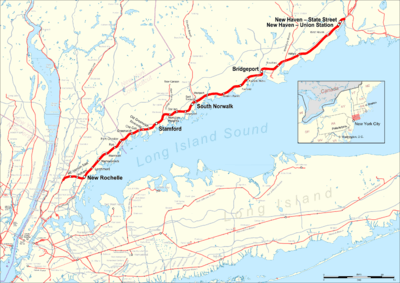 | |||||||||||||||||||||||||||||||||||||||||||||||||||||||||||||||||||||||||||||||||||||||||||||||||||||||||||||||||||||||||||||||||||||||||||||||||||||||||||||||||||||||||||||||||||||||||||||||||||||||||||||||||||||||||||||||||||||||||||||||||||||||||||||||||||||||||||||||||||||||||||||||||||||||||||||||||||||||||||||||||||||||||||||||||||||||||||||||||||||||||||||||||||||||||||||||||||||||||||||||||||||||||||||||||||||||||||||||||||||||||||||||||||||||||||||||||||||||||||||||||||||||||||||||||||||||||||||||||||||||||||||||||||||||||||||||||||||||||||||||||||||||||||||||||||||||||||||||||||||||||||||||||||||||||||||||||||||||||||||||||||||||||||||||||||||||||||||||||||||||||||||||||||||||||||||||||||||||||||||||||||||||||||||||||||||||||||||||||||||||||||||||||||||||||||||||||||||||||||||||||||||||||||||||||||||||||||||||||||||||||||||||||||||
| Overview | |||||||||||||||||||||||||||||||||||||||||||||||||||||||||||||||||||||||||||||||||||||||||||||||||||||||||||||||||||||||||||||||||||||||||||||||||||||||||||||||||||||||||||||||||||||||||||||||||||||||||||||||||||||||||||||||||||||||||||||||||||||||||||||||||||||||||||||||||||||||||||||||||||||||||||||||||||||||||||||||||||||||||||||||||||||||||||||||||||||||||||||||||||||||||||||||||||||||||||||||||||||||||||||||||||||||||||||||||||||||||||||||||||||||||||||||||||||||||||||||||||||||||||||||||||||||||||||||||||||||||||||||||||||||||||||||||||||||||||||||||||||||||||||||||||||||||||||||||||||||||||||||||||||||||||||||||||||||||||||||||||||||||||||||||||||||||||||||||||||||||||||||||||||||||||||||||||||||||||||||||||||||||||||||||||||||||||||||||||||||||||||||||||||||||||||||||||||||||||||||||||||||||||||||||||||||||||||||||||||||||||||||||||||
| Type | Commuter rail line | ||||||||||||||||||||||||||||||||||||||||||||||||||||||||||||||||||||||||||||||||||||||||||||||||||||||||||||||||||||||||||||||||||||||||||||||||||||||||||||||||||||||||||||||||||||||||||||||||||||||||||||||||||||||||||||||||||||||||||||||||||||||||||||||||||||||||||||||||||||||||||||||||||||||||||||||||||||||||||||||||||||||||||||||||||||||||||||||||||||||||||||||||||||||||||||||||||||||||||||||||||||||||||||||||||||||||||||||||||||||||||||||||||||||||||||||||||||||||||||||||||||||||||||||||||||||||||||||||||||||||||||||||||||||||||||||||||||||||||||||||||||||||||||||||||||||||||||||||||||||||||||||||||||||||||||||||||||||||||||||||||||||||||||||||||||||||||||||||||||||||||||||||||||||||||||||||||||||||||||||||||||||||||||||||||||||||||||||||||||||||||||||||||||||||||||||||||||||||||||||||||||||||||||||||||||||||||||||||||||||||||||||||||||
| System | Metro-North | ||||||||||||||||||||||||||||||||||||||||||||||||||||||||||||||||||||||||||||||||||||||||||||||||||||||||||||||||||||||||||||||||||||||||||||||||||||||||||||||||||||||||||||||||||||||||||||||||||||||||||||||||||||||||||||||||||||||||||||||||||||||||||||||||||||||||||||||||||||||||||||||||||||||||||||||||||||||||||||||||||||||||||||||||||||||||||||||||||||||||||||||||||||||||||||||||||||||||||||||||||||||||||||||||||||||||||||||||||||||||||||||||||||||||||||||||||||||||||||||||||||||||||||||||||||||||||||||||||||||||||||||||||||||||||||||||||||||||||||||||||||||||||||||||||||||||||||||||||||||||||||||||||||||||||||||||||||||||||||||||||||||||||||||||||||||||||||||||||||||||||||||||||||||||||||||||||||||||||||||||||||||||||||||||||||||||||||||||||||||||||||||||||||||||||||||||||||||||||||||||||||||||||||||||||||||||||||||||||||||||||||||||||||
| Status | Operating | ||||||||||||||||||||||||||||||||||||||||||||||||||||||||||||||||||||||||||||||||||||||||||||||||||||||||||||||||||||||||||||||||||||||||||||||||||||||||||||||||||||||||||||||||||||||||||||||||||||||||||||||||||||||||||||||||||||||||||||||||||||||||||||||||||||||||||||||||||||||||||||||||||||||||||||||||||||||||||||||||||||||||||||||||||||||||||||||||||||||||||||||||||||||||||||||||||||||||||||||||||||||||||||||||||||||||||||||||||||||||||||||||||||||||||||||||||||||||||||||||||||||||||||||||||||||||||||||||||||||||||||||||||||||||||||||||||||||||||||||||||||||||||||||||||||||||||||||||||||||||||||||||||||||||||||||||||||||||||||||||||||||||||||||||||||||||||||||||||||||||||||||||||||||||||||||||||||||||||||||||||||||||||||||||||||||||||||||||||||||||||||||||||||||||||||||||||||||||||||||||||||||||||||||||||||||||||||||||||||||||||||||||||||
| Locale |
New York City (New York and Bronx Counties) and Westchester County, New York Fairfield and New Haven Counties, Connecticut | ||||||||||||||||||||||||||||||||||||||||||||||||||||||||||||||||||||||||||||||||||||||||||||||||||||||||||||||||||||||||||||||||||||||||||||||||||||||||||||||||||||||||||||||||||||||||||||||||||||||||||||||||||||||||||||||||||||||||||||||||||||||||||||||||||||||||||||||||||||||||||||||||||||||||||||||||||||||||||||||||||||||||||||||||||||||||||||||||||||||||||||||||||||||||||||||||||||||||||||||||||||||||||||||||||||||||||||||||||||||||||||||||||||||||||||||||||||||||||||||||||||||||||||||||||||||||||||||||||||||||||||||||||||||||||||||||||||||||||||||||||||||||||||||||||||||||||||||||||||||||||||||||||||||||||||||||||||||||||||||||||||||||||||||||||||||||||||||||||||||||||||||||||||||||||||||||||||||||||||||||||||||||||||||||||||||||||||||||||||||||||||||||||||||||||||||||||||||||||||||||||||||||||||||||||||||||||||||||||||||||||||||||||||
| Termini |
Grand Central Terminal (south terminal) Secaucus Junction (south terminal during games at Meadowlands Sports Complex) New Haven – State Street or New Haven – Union Station (north terminals) | ||||||||||||||||||||||||||||||||||||||||||||||||||||||||||||||||||||||||||||||||||||||||||||||||||||||||||||||||||||||||||||||||||||||||||||||||||||||||||||||||||||||||||||||||||||||||||||||||||||||||||||||||||||||||||||||||||||||||||||||||||||||||||||||||||||||||||||||||||||||||||||||||||||||||||||||||||||||||||||||||||||||||||||||||||||||||||||||||||||||||||||||||||||||||||||||||||||||||||||||||||||||||||||||||||||||||||||||||||||||||||||||||||||||||||||||||||||||||||||||||||||||||||||||||||||||||||||||||||||||||||||||||||||||||||||||||||||||||||||||||||||||||||||||||||||||||||||||||||||||||||||||||||||||||||||||||||||||||||||||||||||||||||||||||||||||||||||||||||||||||||||||||||||||||||||||||||||||||||||||||||||||||||||||||||||||||||||||||||||||||||||||||||||||||||||||||||||||||||||||||||||||||||||||||||||||||||||||||||||||||||||||||||||
| Stations | 30 main; 17 branch; 1 seasonal | ||||||||||||||||||||||||||||||||||||||||||||||||||||||||||||||||||||||||||||||||||||||||||||||||||||||||||||||||||||||||||||||||||||||||||||||||||||||||||||||||||||||||||||||||||||||||||||||||||||||||||||||||||||||||||||||||||||||||||||||||||||||||||||||||||||||||||||||||||||||||||||||||||||||||||||||||||||||||||||||||||||||||||||||||||||||||||||||||||||||||||||||||||||||||||||||||||||||||||||||||||||||||||||||||||||||||||||||||||||||||||||||||||||||||||||||||||||||||||||||||||||||||||||||||||||||||||||||||||||||||||||||||||||||||||||||||||||||||||||||||||||||||||||||||||||||||||||||||||||||||||||||||||||||||||||||||||||||||||||||||||||||||||||||||||||||||||||||||||||||||||||||||||||||||||||||||||||||||||||||||||||||||||||||||||||||||||||||||||||||||||||||||||||||||||||||||||||||||||||||||||||||||||||||||||||||||||||||||||||||||||||||||||||
| Services | 1 main line; 4 branches | ||||||||||||||||||||||||||||||||||||||||||||||||||||||||||||||||||||||||||||||||||||||||||||||||||||||||||||||||||||||||||||||||||||||||||||||||||||||||||||||||||||||||||||||||||||||||||||||||||||||||||||||||||||||||||||||||||||||||||||||||||||||||||||||||||||||||||||||||||||||||||||||||||||||||||||||||||||||||||||||||||||||||||||||||||||||||||||||||||||||||||||||||||||||||||||||||||||||||||||||||||||||||||||||||||||||||||||||||||||||||||||||||||||||||||||||||||||||||||||||||||||||||||||||||||||||||||||||||||||||||||||||||||||||||||||||||||||||||||||||||||||||||||||||||||||||||||||||||||||||||||||||||||||||||||||||||||||||||||||||||||||||||||||||||||||||||||||||||||||||||||||||||||||||||||||||||||||||||||||||||||||||||||||||||||||||||||||||||||||||||||||||||||||||||||||||||||||||||||||||||||||||||||||||||||||||||||||||||||||||||||||||||||||
| Daily ridership |
125,000 weekday (39 million annual)[1] | ||||||||||||||||||||||||||||||||||||||||||||||||||||||||||||||||||||||||||||||||||||||||||||||||||||||||||||||||||||||||||||||||||||||||||||||||||||||||||||||||||||||||||||||||||||||||||||||||||||||||||||||||||||||||||||||||||||||||||||||||||||||||||||||||||||||||||||||||||||||||||||||||||||||||||||||||||||||||||||||||||||||||||||||||||||||||||||||||||||||||||||||||||||||||||||||||||||||||||||||||||||||||||||||||||||||||||||||||||||||||||||||||||||||||||||||||||||||||||||||||||||||||||||||||||||||||||||||||||||||||||||||||||||||||||||||||||||||||||||||||||||||||||||||||||||||||||||||||||||||||||||||||||||||||||||||||||||||||||||||||||||||||||||||||||||||||||||||||||||||||||||||||||||||||||||||||||||||||||||||||||||||||||||||||||||||||||||||||||||||||||||||||||||||||||||||||||||||||||||||||||||||||||||||||||||||||||||||||||||||||||||||||||||
| Operation | |||||||||||||||||||||||||||||||||||||||||||||||||||||||||||||||||||||||||||||||||||||||||||||||||||||||||||||||||||||||||||||||||||||||||||||||||||||||||||||||||||||||||||||||||||||||||||||||||||||||||||||||||||||||||||||||||||||||||||||||||||||||||||||||||||||||||||||||||||||||||||||||||||||||||||||||||||||||||||||||||||||||||||||||||||||||||||||||||||||||||||||||||||||||||||||||||||||||||||||||||||||||||||||||||||||||||||||||||||||||||||||||||||||||||||||||||||||||||||||||||||||||||||||||||||||||||||||||||||||||||||||||||||||||||||||||||||||||||||||||||||||||||||||||||||||||||||||||||||||||||||||||||||||||||||||||||||||||||||||||||||||||||||||||||||||||||||||||||||||||||||||||||||||||||||||||||||||||||||||||||||||||||||||||||||||||||||||||||||||||||||||||||||||||||||||||||||||||||||||||||||||||||||||||||||||||||||||||||||||||||||||||||||||
| Owner |
Connecticut DOT (within Connecticut) Metro-North (Westchester County, New York) Argent Ventures (New York City, leased to Metro-North) | ||||||||||||||||||||||||||||||||||||||||||||||||||||||||||||||||||||||||||||||||||||||||||||||||||||||||||||||||||||||||||||||||||||||||||||||||||||||||||||||||||||||||||||||||||||||||||||||||||||||||||||||||||||||||||||||||||||||||||||||||||||||||||||||||||||||||||||||||||||||||||||||||||||||||||||||||||||||||||||||||||||||||||||||||||||||||||||||||||||||||||||||||||||||||||||||||||||||||||||||||||||||||||||||||||||||||||||||||||||||||||||||||||||||||||||||||||||||||||||||||||||||||||||||||||||||||||||||||||||||||||||||||||||||||||||||||||||||||||||||||||||||||||||||||||||||||||||||||||||||||||||||||||||||||||||||||||||||||||||||||||||||||||||||||||||||||||||||||||||||||||||||||||||||||||||||||||||||||||||||||||||||||||||||||||||||||||||||||||||||||||||||||||||||||||||||||||||||||||||||||||||||||||||||||||||||||||||||||||||||||||||||||||||
| Operator(s) | Metro-North | ||||||||||||||||||||||||||||||||||||||||||||||||||||||||||||||||||||||||||||||||||||||||||||||||||||||||||||||||||||||||||||||||||||||||||||||||||||||||||||||||||||||||||||||||||||||||||||||||||||||||||||||||||||||||||||||||||||||||||||||||||||||||||||||||||||||||||||||||||||||||||||||||||||||||||||||||||||||||||||||||||||||||||||||||||||||||||||||||||||||||||||||||||||||||||||||||||||||||||||||||||||||||||||||||||||||||||||||||||||||||||||||||||||||||||||||||||||||||||||||||||||||||||||||||||||||||||||||||||||||||||||||||||||||||||||||||||||||||||||||||||||||||||||||||||||||||||||||||||||||||||||||||||||||||||||||||||||||||||||||||||||||||||||||||||||||||||||||||||||||||||||||||||||||||||||||||||||||||||||||||||||||||||||||||||||||||||||||||||||||||||||||||||||||||||||||||||||||||||||||||||||||||||||||||||||||||||||||||||||||||||||||||||||
| Character |
4 track main line (3 tracks east of Milford) single track branches | ||||||||||||||||||||||||||||||||||||||||||||||||||||||||||||||||||||||||||||||||||||||||||||||||||||||||||||||||||||||||||||||||||||||||||||||||||||||||||||||||||||||||||||||||||||||||||||||||||||||||||||||||||||||||||||||||||||||||||||||||||||||||||||||||||||||||||||||||||||||||||||||||||||||||||||||||||||||||||||||||||||||||||||||||||||||||||||||||||||||||||||||||||||||||||||||||||||||||||||||||||||||||||||||||||||||||||||||||||||||||||||||||||||||||||||||||||||||||||||||||||||||||||||||||||||||||||||||||||||||||||||||||||||||||||||||||||||||||||||||||||||||||||||||||||||||||||||||||||||||||||||||||||||||||||||||||||||||||||||||||||||||||||||||||||||||||||||||||||||||||||||||||||||||||||||||||||||||||||||||||||||||||||||||||||||||||||||||||||||||||||||||||||||||||||||||||||||||||||||||||||||||||||||||||||||||||||||||||||||||||||||||||||||
| Technical | |||||||||||||||||||||||||||||||||||||||||||||||||||||||||||||||||||||||||||||||||||||||||||||||||||||||||||||||||||||||||||||||||||||||||||||||||||||||||||||||||||||||||||||||||||||||||||||||||||||||||||||||||||||||||||||||||||||||||||||||||||||||||||||||||||||||||||||||||||||||||||||||||||||||||||||||||||||||||||||||||||||||||||||||||||||||||||||||||||||||||||||||||||||||||||||||||||||||||||||||||||||||||||||||||||||||||||||||||||||||||||||||||||||||||||||||||||||||||||||||||||||||||||||||||||||||||||||||||||||||||||||||||||||||||||||||||||||||||||||||||||||||||||||||||||||||||||||||||||||||||||||||||||||||||||||||||||||||||||||||||||||||||||||||||||||||||||||||||||||||||||||||||||||||||||||||||||||||||||||||||||||||||||||||||||||||||||||||||||||||||||||||||||||||||||||||||||||||||||||||||||||||||||||||||||||||||||||||||||||||||||||||||||||
| Track length |
74 miles (119 km) (main line) 7.9 miles (12.7 km) (New Canaan Branch) 23.6 miles (38.0 km) (Danbury Branch) 27 miles (43 km) (Waterbury Branch) | ||||||||||||||||||||||||||||||||||||||||||||||||||||||||||||||||||||||||||||||||||||||||||||||||||||||||||||||||||||||||||||||||||||||||||||||||||||||||||||||||||||||||||||||||||||||||||||||||||||||||||||||||||||||||||||||||||||||||||||||||||||||||||||||||||||||||||||||||||||||||||||||||||||||||||||||||||||||||||||||||||||||||||||||||||||||||||||||||||||||||||||||||||||||||||||||||||||||||||||||||||||||||||||||||||||||||||||||||||||||||||||||||||||||||||||||||||||||||||||||||||||||||||||||||||||||||||||||||||||||||||||||||||||||||||||||||||||||||||||||||||||||||||||||||||||||||||||||||||||||||||||||||||||||||||||||||||||||||||||||||||||||||||||||||||||||||||||||||||||||||||||||||||||||||||||||||||||||||||||||||||||||||||||||||||||||||||||||||||||||||||||||||||||||||||||||||||||||||||||||||||||||||||||||||||||||||||||||||||||||||||||||||||||
| Track gauge | 1,435 mm (4 ft 8 1⁄2 in) | ||||||||||||||||||||||||||||||||||||||||||||||||||||||||||||||||||||||||||||||||||||||||||||||||||||||||||||||||||||||||||||||||||||||||||||||||||||||||||||||||||||||||||||||||||||||||||||||||||||||||||||||||||||||||||||||||||||||||||||||||||||||||||||||||||||||||||||||||||||||||||||||||||||||||||||||||||||||||||||||||||||||||||||||||||||||||||||||||||||||||||||||||||||||||||||||||||||||||||||||||||||||||||||||||||||||||||||||||||||||||||||||||||||||||||||||||||||||||||||||||||||||||||||||||||||||||||||||||||||||||||||||||||||||||||||||||||||||||||||||||||||||||||||||||||||||||||||||||||||||||||||||||||||||||||||||||||||||||||||||||||||||||||||||||||||||||||||||||||||||||||||||||||||||||||||||||||||||||||||||||||||||||||||||||||||||||||||||||||||||||||||||||||||||||||||||||||||||||||||||||||||||||||||||||||||||||||||||||||||||||||||||||||||
| Electrification |
12.5 kV 60 Hz (AC) overhead catenary north of Mount Vernon East 700V (DC) third rail south of Pelham | ||||||||||||||||||||||||||||||||||||||||||||||||||||||||||||||||||||||||||||||||||||||||||||||||||||||||||||||||||||||||||||||||||||||||||||||||||||||||||||||||||||||||||||||||||||||||||||||||||||||||||||||||||||||||||||||||||||||||||||||||||||||||||||||||||||||||||||||||||||||||||||||||||||||||||||||||||||||||||||||||||||||||||||||||||||||||||||||||||||||||||||||||||||||||||||||||||||||||||||||||||||||||||||||||||||||||||||||||||||||||||||||||||||||||||||||||||||||||||||||||||||||||||||||||||||||||||||||||||||||||||||||||||||||||||||||||||||||||||||||||||||||||||||||||||||||||||||||||||||||||||||||||||||||||||||||||||||||||||||||||||||||||||||||||||||||||||||||||||||||||||||||||||||||||||||||||||||||||||||||||||||||||||||||||||||||||||||||||||||||||||||||||||||||||||||||||||||||||||||||||||||||||||||||||||||||||||||||||||||||||||||||||||||
| |||||||||||||||||||||||||||||||||||||||||||||||||||||||||||||||||||||||||||||||||||||||||||||||||||||||||||||||||||||||||||||||||||||||||||||||||||||||||||||||||||||||||||||||||||||||||||||||||||||||||||||||||||||||||||||||||||||||||||||||||||||||||||||||||||||||||||||||||||||||||||||||||||||||||||||||||||||||||||||||||||||||||||||||||||||||||||||||||||||||||||||||||||||||||||||||||||||||||||||||||||||||||||||||||||||||||||||||||||||||||||||||||||||||||||||||||||||||||||||||||||||||||||||||||||||||||||||||||||||||||||||||||||||||||||||||||||||||||||||||||||||||||||||||||||||||||||||||||||||||||||||||||||||||||||||||||||||||||||||||||||||||||||||||||||||||||||||||||||||||||||||||||||||||||||||||||||||||||||||||||||||||||||||||||||||||||||||||||||||||||||||||||||||||||||||||||||||||||||||||||||||||||||||||||||||||||||||||||||||||||||||||||||||

Metro-North Railroad's New Haven Line runs from New Haven, Connecticut, southwest to Mount Vernon, New York. There it joins the Metro-North Harlem Line, where trains continue south to Grand Central Terminal in Manhattan. The New Haven Line's ridership, at 125,000 weekday and 39 million annual passengers, ranks as the busiest rail line in the United States.[1]
The line is owned by Metro-North from Mount Vernon to the New York-Connecticut border. From the state line to New Haven, the right-of-way is owned by the Connecticut Department of Transportation (ConnDOT). From west to east in Connecticut, three branches split off: the New Canaan Branch, Danbury Branch, and Waterbury Branch, all owned by ConnDOT.
In addition to Metro-North trains, Amtrak's Northeast Regional and Acela Express use the line between New Rochelle, New York and New Haven, Connecticut, as part of the Northeast Corridor. Shore Line East (SLE), a commuter service operated by Amtrak for ConnDOT, also operates over the New Haven Line from its normal terminus at New Haven, with limited express service to Stamford with a single stop in Bridgeport.
History
Before Metro-North
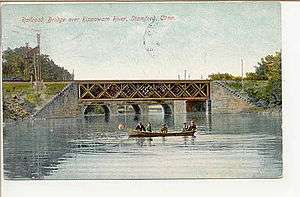
The rail line from New York to New Haven was completed by 1849, and commuters started using the trains soon afterward. The line was part of the New York and New Haven Railroad — after 1872, the New York, New Haven and Hartford Railroad — which had trackage rights over the New York Central Railroad's New York and Harlem Railroad into Grand Central.
The Great Blizzard of 1888 blocked the rail line in Westport, between the Saugatuck and Green's Farms stations. It took eight days to restore service, as snow was dug out by hand.[2]
In the early 20th century, the line was electrified and steam locomotives were replaced.[2]
Penn Central, the Metropolitan Transportation Authority, and the states of New York and Connecticut agreed on November 25, 1969, that New York would buy its section of the line and Connecticut would lease its section as far as New Haven.[3] The acquisition took place on January 1, 1971, and included the three branches.[4] After Penn Central went bankrupt, the Consolidated Rail Corporation (Conrail) took over operations in 1976, until Metro-North was formed in 1983. Metro-North undertook to rebuild the railroad, upgrading signals, tracks, ties, roadbeds, and rolling stock.
New and closed infrastructure
.jpg)
Over the years, some stations have been abandoned or closed, and some characteristics of the line have changed. The Columbus Avenue station in Mount Vernon was closed in the Penn Central era, due to its proximity to Mt. Vernon station and the expense of converting it to high-level platforms. It had previously been a transfer station to the overhead viaduct station of the New York, Westchester and Boston Railway; an impressive ruin remains and is easily visible from passing trains. Other stations abandoned along the mainline include Devon, at the junction of the Waterbury Branch, and Norwalk, replaced by South Norwalk.[5] The changeover from catenary to third rail was moved from Woodlawn to just west of Pelham in the early 1990s.[6] There is an abandoned coach yard just east of Port Chester station.
The New Haven's Harlem River and Port Chester Railroad, diverging from the main line below New Rochelle, ran local passenger service to the Harlem River Terminal in the South Bronx until 1931, and has several abandoned stations.[7][8] It was a major freight route for the New Haven to Queens, where it interchanged with the Long Island Rail Road and the Pennsylvania Railroad. Four new stations are proposed along this route as part of Metro-North's Penn Station access study.
As a largely four-track electrified mainline, the New Haven Line is capable of supporting a mix of local and express service, allowing for a higher density of stations than many other commuter rail lines. By the beginning of the 20th century, there were stations in every population center along the line. Although some of these were dropped over the years due to low ridership, no new stations were added for over 100 years. Fairfield Metro opened in December 2011 to support a new commercial development. After a decade-long process choosing between locations in West Haven and Orange, West Haven station opened in August 2013, filling the longest gap on the line.
Incidents and accidents
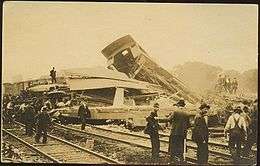
Some fatal train accidents have occurred on the New Haven Line. One occurred at the Norwalk River bridge in Norwalk, Connecticut on May 6, 1855. Another occurred in Westport, Connecticut in 1895, and another in that town on October 3, 1912.[2] Another fatality occurred in August 1969 on the New Canaan branch. There was also a collision in Mount Vernon in 1988 that killed an engineer. More recently, in 2012 two people were killed by a train-car collision at an ungated grade crossing in Redding, Connecticut,[9] and in 2013 a track worker was struck and killed in West Haven.[10]
Non-fatal incidents have also occurred. The May 2013 Fairfield train crash resulted in 72 injuries after two trains collided following a derailment near Fairfield.[11] On September 25, 2013, a main feeder cable from Con Edison that provided electricity to an 8-mile (13 km) segment of the New Haven Line failed, causing electric train service over the line to halt between Mount Vernon and Harrison, New York. Metro-North used diesel locomotives and alternative bus service to carry passengers until full service was restored after 12 days of disruption.[12]
Operations
Passenger service
Main Line
New Haven Line trains primarily use Electric Multiple Unit (EMU) consists (M2s, M4s, M6s and M8s). The line is operated primarily in two zones: an "inner" zone from Grand Central Terminal to Stamford, CT; and an "outer" zone from Stamford to New Haven.
Trains from the outer zone generally run local, making most stops from New Haven to Stamford, and then express to Grand Central with a single stop at Harlem – 125th St. Trains from the inner zone generally originate in Stamford, running local and making most stops, with some stopping at Fordham station. Passengers heading from one zone to another can make cross-platform interchanges at Stamford.
During peak hours, trains generally run in shorter, express zones, making limited stops as they fill faster, with some overlap in start and end stations to allow for intra-zone transfers for those traveling locally. Many of these trains begin their runs at intermediate stations within their zones, and then run express to Grand Central or vice versa.
All New Haven Line electric trains change over between third rail and overhead catenary between Mount Vernon East and Pelham, at normal track speed.[13] Inbound trains to Grand Central lower their pantographs in this area, while outbound trains raise them; the third rail shoes stay in the same position both in and out of third rail territory. Both catenary and third rail overlap for a quarter-mile between Mount Vernon East and Pelham to facilitate this changeover.
The entire mainline is grade-separated with no grade crossings.
Branches
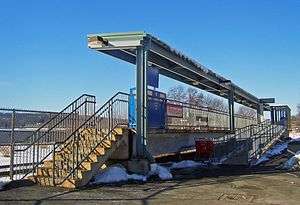
Within the Metro-North system, the New Haven Line is the only line with operating branches. The New Haven Railroad, Metro-North's predecessor, had an extensive branch network in Connecticut, including: a branch off the Danbury Branch at the appropriately named Branchville, CT to Ridgefield, CT; another branch off the main line for freight at Bridgeport known as the Berkshire (a never-used bridge spans the Merritt Parkway in Trumbull that would have accommodated this branch under potential reactivation scenarios); and the Maybrook line, which connected the Waterbury Branch with the Danbury Branch, with several branches of its own.
Branch lines generally operate as their own zones, with the first main line station as a terminus rather than Grand Central, providing transfers to other main line stations or Grand Central. During peak hours, some of these trains run express on the main line through to Grand Central, but generally remain as local service on the branch itself.
The New Canaan Branch is electrified, while the Danbury and Waterbury branches use train consists powered by diesel locomotives. Some main line trains will occasionally use diesel equipment in revenue runs for positioning or due to equipment shortages.
In contrast with the main line, the branches operate almost entirely at grade, with frequent crossings.
Sports special services
Yankee Stadium
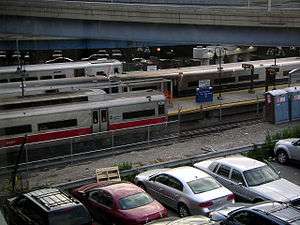
Yankees – East 153rd Street station opened on May 23, 2009. Although it is a Hudson Line commuter station, it offers New Haven and Harlem Line commuters direct game-day service on weekends and after weeknight games, and shuttle service from Harlem – 125th Street station during peak periods. The Yankee Stadium station, 125th St and Fordham are the three Metro-North stations that serve New Haven Line customers without being located on the Line itself.[14]
Meadowlands game day service
The Train to the Game service on the New Haven Line to the Meadowlands Sports Complex operates only for Sunday 1 pm NFL Giants and Jets games. The first game scheduled was on September 20, 2009, when the New York Jets hosted the New England Patriots, following a successful test of trains in non-revenue service on August 23.[15] Train service for NFL games continues as of 2015.[16][17]
The service is operated using New Jersey Transit (NJT) equipment under an operating agreement among NJT, Metro-North, and Amtrak. NJT equipment is required as its electric locomotive power is capable of running under the various catenary systems over three separate railroads using different power supplies. The program is only being offered for the early afternoon games so that the NJT equipment can be moved back in place for the Monday morning rush hour.[18]
The service makes limited stops on New Haven Line, and uses the Hell Gate Line to access New York Penn Station and Secaucus Junction station of NJT. At Secaucus, riders transfer to a shuttle on the Meadowlands Rail Line. Stops currently scheduled are New Haven, West Haven, Bridgeport, Fairfield, Westport, South Norwalk, Stamford, Greenwich, Rye, Larchmont, Penn Station, and Secaucus.[17]
Excursions
Metro-North occasionally runs excursion trains or farewell and fan trips over portions of its predecessors' historic territory, or portions of its own territory which are no longer in revenue service. A trip in 2008 ran north from the end of the Danbury Branch to Kent, CT. An earlier trip in 2004 ran along the Beacon Line from Danbury, using FL-9 locomotives owned by ConnDOT.
Shared trackage and operating agreements
Although the New Haven Line shares track with the Harlem Line in the Bronx, along this line it stops only at Fordham station, due to an 1848 agreement with the Harlem Line's predecessor railroad, the New York Central. This agreement granted the New Haven predecessor New York, New Haven and Hartford Railroad trackage rights over the Harlem Line to Grand Central Terminal, but restricted its service in the Bronx to discharge service only (i.e. no boarding revenue passengers).[19] This agreement continues in its present form due to the operating agreement between Metro-North and the Connecticut Department of Transportation (ConnDOT), which means passengers traveling between Fordham and Manhattan may not ride on a New Haven Line train.[20] While the New Haven Line's one stop in the Bronx is currently at Fordham, from 1848 until the 1920s that stop was instead at Woodlawn.[21]
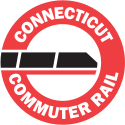
The New Haven Line is also operated in Connecticut under an agreement between Metro-North and the ConnDOT, in which costs for main line operation are shared (currently 65% ConnDOT and 35% Metro-North) and costs for branch service are borne 100% by ConnDOT.[22]
Freight service
Freight service over the New Haven Line is operated by a variety of Class I railroads and short line railroads, based on operating agreements negotiated with either Metro-North or ConnDOT. These operators include CSX Transportation, Providence and Worcester Railroad, and Springfield Terminal Railway.[23]
Local freight stops include Marval Industries in Mamaroneck, NY, which includes two "exempt" rail crossings on Fenimore Road (school buses and trucks are not required to stop) and some minor "street running" of rails along Railroad Way.[24] This siding is served by a CSX local approximately once a week at night. Other sidings served by CSX are Ring's End Lumber in Darien, CT, and a long industrial siding east of Milford, CT. Providence & Worcester trains can be seen running a seasonal stone train along the New Haven Line bound for Long Island.[25]
There are several disconnected and abandoned sidings along the line as well, including one in New Rochelle, NY, just west of Shell interlocking, and one just east of Larchmont station that served a freight house. There are also many active, dormant, and disconnected or abandoned sidings along the branch lines, as well as freight service operated on freight-only lines being considered for renewed passenger service.
Infrastructure
Control points/signals
The New Haven main line and New Canaan branch use Automatic Train Control, or ATC, in conjunction with Cab Signals, a safety feature used in routing trains, keeping safe distances, and moderating train speeds.
Track interlockings are governed within Control Point boundaries, or CP's. The New Haven Line is unique in that the CP's are known (informally) by nicknames for their region. The following is a partial list of nicknames that were first established by Penn Central based on the city or town where they were located, or a local landmark. The former New Haven Railroad used "Signal Station" (SS) numbers. For example, SS 22 became "Shell" for New Rochelle, SS 26 became "Pike" because it is alongside the Connecticut Turnpike, and so on.[8] The numbers reflect mileage from Grand Central, with the preceding "2" signifying the New Haven Line; the Hudson Line has no preceding number and the Harlem Line uses "1."
- CP212: VERN (Harlem Line)
- CP215: PELL
- CP216: SHELL Division Post Amtrak (Hell Gate Branch)
- CP217: E. SHELL (New Rochelle Yard)
- CP223: PIKE
- CP229: GREEN
- CP230: COB (Mianus River)
- CP232: SELLECK
- CP233: W. STAM
- CP234: STAM (Stamford Yard)
- CP235: GLENBROOK (New Canaan Branch)
- CP240: WEST WALK
- CP241: WALK (Norwalk River) (Danbury Branch)
- CP244: SAGA (Saugatuck River)
- CP248: SASCO
- CP255: PORT
- CP256: PECK (Pequonnock River)
- CP257: CENTRAL (East Bridgeport Yard)
- CP261: DEVON (Housatonic River) (Waterbury Branch)
- CP266: WOODMONT
- CP271: WEST RIVER
- CP272: CEDAR ST (New Haven Yard)
- CP273: FAIR ST (New Haven Yard)
- CP274: CHAPEL ST (Division Post Amtrak)
The SHELL and E SHELL interlockings were recently upgraded to allow Amtrak trains to cross-over the main line faster and in a more orderly fashion. As a result, the tracks in New Rochelle station were rearranged so that Amtrak boards only on the outbound Metro-North platform.
Signals on the New Haven Line had once been mounted on the catenary bridges; these were all replaced throughout the 1990s and into the early 2000s with wayside "dwarf" signals at track level along the right-of-way. The form of signalization known as Centralized Traffic Control, or CTC, is used on the main line and the New Canaan and Danbury Branches, the latter branch having been equipped with this system in 2013. The Waterbury Branch is currently "manual block", or unsignaled, territory.
Traction power substations
The New Haven's traction power system was originally constructed to operate at 11 kV, 25 Hz, using power supplied by the Cos Cob Power Station at 41°01′47″N 73°35′46″W / 41.029631°N 73.596015°W. The power station was shut down around 1986 and Metro-North converted the traction power system to 60 Hz operation. Traction power is converted from utility-supplied 115 kV (single phase) to 27 kV (single phase with center tap), which is distributed using an auto-transformer system.[26] Power is supplied to the catenary at 12.5 kV, 60 Hz.
| Milepost | Name | Coordinates |
|---|---|---|
| 14.0 | Fulton Ave | 40°54′41″N 73°49′42″W / 40.9114°N 73.8283°W |
| 16.6 | New Rochelle | 40°54′25″N 73°47′23″W / 40.90694°N 73.78972°W |
| 30 | Cos Cob | 41°01′49″N 73°35′48″W / 41.030233°N 73.5967°W |
| 33.0 | Stamford | 41°2′52″N 73°32′15″W / 41.04778°N 73.53750°W |
| 40 | Norwalk | 41°05′53″N 73°25′10″W / 41.098185°N 73.419527°W |
| 41 | East Norwalk | 41°06′09″N 73°24′28″W / 41.102525°N 73.407882°W |
| 59.2 | Devon (Stratford) | 41°11′53″N 73°7′34″W / 41.19806°N 73.12611°W |
| 72.3 | New Haven | 41°17′18″N 72°56′17″W / 41.28833°N 72.93806°W |
Stations
Main Line
Milepost Zero on the New Haven Line is at the north property line of 42nd St (i.e. 200–300 ft south of the ends of the tracks).
| Zone | Station | Miles (km) from GCT |
Date opened |
Date closed |
Connections / notes |
|---|---|---|---|---|---|
| 1 | Grand Central Terminal |
0.0 (0.0) | October 6, 1871[27] | Originally Grand Central Depot, then Grand Central Station | |
| 59th Street | |||||
| 72nd Street | |||||
| 86th Street | May 15, 1876[28] | c. 1903[28] | |||
| 110th Street | c. 1900 | ||||
| Harlem – 125th Street |
4.2 (6.8) | 1897[7] | |||
| Manhattan / Bronx border | |||||
| 2 | |||||
| 138th Street | 1886[29] | 1972[7][21] | Also named Mott Haven and The Bronx | ||
| Hudson Line diverges at Mott Haven Junction | |||||
| Melrose | 6.1 (9.8) | c. 1890[30] | Served by Harlem Line trains | ||
| Morrisania | c. 1858[31] | 1972[7][21] | |||
| Claremont Park | c. 1960[7][21] | ||||
| Tremont | 7.9 (12.7) | c. 1890[30] | Served by Harlem Line trains | ||
| 183rd Street | 1972[21] | ||||
| Fordham |
8.9 (14.3) | ||||
| Botanical Garden |
9.5 (15.2) | 1893[32] | Served by Harlem Line trains | ||
| Williams Bridge | 10.5 (16.9) | c. 1842 | Served by Harlem Line trains | ||
| Woodlawn | 11.8 (19.0) | 1848 | Served by Harlem Line trains | ||
| Harlem Line diverges at Woodlawn Junction | |||||
| Bronx County / Westchester County border | |||||
| 12 | Mount Vernon East |
14.0 (22.5) | Originally Mount Vernon | ||
| Columbus Avenue | |||||
| Power change from third rail to overhead catenary | |||||
| Pelham | 15.1 (24.3) | 1893[33] | |||
| Northeast Corridor converges at Shell Interlocking | |||||
| New Rochelle |
16.6 (26.7) | 1848 | |||
| 13 | Larchmont |
18.7 (30.1) | |||
| Mamaroneck | 20.5 (33.0) | 1888 | |||
| Harrison | 22.2 (35.7) | c. 1870 | |||
| 14 | Rye |
24.1 (38.8) | |||
| Port Chester | 25.7 (41.4) | 1890 | |||
| Westchester County, New York / Fairfield County, Connecticut border | |||||
| 15 | Greenwich |
28.1 (45.2) | |||
| Cos Cob | 29.6 (47.6) | 1848[34] | |||
| Riverside | 30.2 (48.6) | ||||
| Old Greenwich | 31.2 (50.2) | 1892 | Originally Sound Beach | ||
| 16 | Stamford |
33.0 (53.1) | 1849 | ||
| New Canaan Branch diverges | |||||
| Noroton Heights | 36.2 (58.3) | ||||
| Darien |
37.7 (60.7) | 1870s | |||
| Rowayton | 39.2 (63.1) | ||||
| 17 | South Norwalk |
41.0 (66.0) | Originally Norwalk | ||
| Danbury Branch diverges | |||||
| East Norwalk | 42.0 (67.6) | ||||
| 18 | Westport |
44.2 (71.1) | Also known as Saugatuck | ||
| Green's Farms | 47.2 (76.0) | ||||
| Southport | 48.9 (78.7) | 1884 | |||
| Fairfield | 50.5 (81.3) | 1882 | |||
| Fairfield Metro |
52.3 (84.2) | 2011 | |||
| 19 | Bridgeport |
55.4 (89.2) | 1840[35] | ||
| 20 | Stratford | 59.0 (95.0) | |||
| Fairfield County / New Haven County border | |||||
| Waterbury Branch splits at site of former Devon Station | |||||
| Milford | 63.2 (101.7 | ||||
| 21 | West Haven |
69.4 (111.7) | 1848 2013 |
c. 1925 | |
| New Haven – Union Station |
72.3 (116.3) | 1920 | |||
| New Haven – State Street |
72.7 (116.9) | Limited service | |||
| Line continues as the Northeast Corridor | |||||
Branches
Rolling stock
Electric
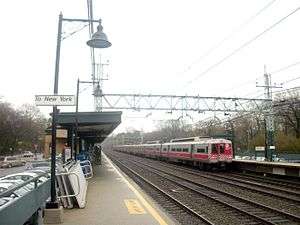


Since the main line and the New Canaan Branch are equipped with 12.5 kV 60 Hz overhead catenary, as opposed to just the 750 V DC third rail of the Hudson and Harlem Lines, different rolling stock that can operate with either power system runs on the New Haven Line. This rolling stock, originally produced by General Electric in two batches (144 in 1972–73 and 100 in 1975–77), was initially branded as the M2 Cosmopolitan, with later versions being made on license by Tokyu Car (model M4, 1988) and Morrison-Knudsen (model M6, 1994). Cosmopolitans can be easily spotted by their red stripe along the side, the presence of pantographs on the lead cars in each set, and a dynamic braking grid on the roof.
M2s operate in married pairs, differentiating them from their predecessor equipment of Pullman Standard and 4400-series washboard MU's (retired since the late 1970s and early 1980s). M4s and M6s also operate in triplets, with the middle "D" car not having a cab. Many M2s were reconditioned to extend their useful life beyond the expected 25 years (as of 2014 most are over or approaching 40 years old), undergoing a Critical Systems Repair (CSR) program.
To replace its aging M2 fleet and increase its total fleet size, Metro-North and ConnDOT have undertaken to purchase from Kawasaki Rail Car an initial order of 300 M8 EMUs. The initial order consists of a "base order" of 210 and a "first option" of 90 cars. This order is estimated to cost $760 million. The base order cost is to be split as per the ConnDOT/MTA operating agreement (65%/35%, respectively).[22]
Although the cost sharing is to conform with the operating agreement, due to Metro-North's capital budgeting process, Metro-North will initially pay only the first $100 million of the order, and ConnDOT will pay the remaining $660 million. Metro-North will bring its contribution to the required 35% upon passage of its 2010–2014 capital budget. Until then, ConnDOT will retain title to any rail cars which exceed its 65% share.
M8s are similar to the M7As running on the Harlem and Hudson lines. They each have two single-leaf doors on each side and a full-width operator's cab, eliminating the so-called "railfan" windows at the front and rear of each train and restricting passengers' ability to walk between car pairs.
M8s have the additional capability of running east of New Haven and along the Hell Gate Line west of New Rochelle to Penn Station over the former Harlem River and Port Chester Railroad. In order to run east of New Haven, the M8s are equipped with Advanced Civil Speed Enforcement System (ACSES) as required by Amtrak. In order to run from New Rochelle to Penn Station, the cars will be equipped with third rail shoes that can operate on both over- and under-running third rail systems. Third rail will have to be extended in Queens for the M8s to overcome a gap between suitable catenary (Amtrak's catenary supply changes in Queens from the compatible 12.5 kV 60 Hz system to the incompatible 12.5 kV 25 Hz) and the third rail utilized by the Long Island Rail Road.
Originally, delivery of the first six cars for testing was to be in July 2009, but was delayed until December 2009 for varied reasons such as design revisions and production delays. The contract allows for additional options for ConnDOT of an additional 80 cars, which may be used for Cafe Cars or for use on Shore Line East at ConnDOT's sole expense, an option that has since been exercised.[36] Procurement of more than 380 cars would require additional authorization (PA 05-4 JSS provides funds to acquire at least 342 rail cars at slightly under $900 million).
On July 20, 2011, the Connecticut Department of Transportation announced the order of 25 unpowered M8 railcars, with options for up to 25 more, at a cost of US$93 million to replace the 48-car M6 fleet.[37]
The CSR program was modified in 2008 as the delivery of M8s neared. Cars that underwent CSR earlier in the program were undergoing additional renovation. Funding was identified in the MTA's 2010 capital program to continue the CSR program if the M4 and M6 cars were not retired. The M2's are slated for retirement as sufficient numbers of the Kawasaki-made M8s enter service and alleviate current equipment shortages.
A new rail car facility to accommodate the new M8 cars is being built in New Haven. Although the project itself is not controversial, the building of it is. Originally estimated at $300 million, the facility is now expected to cost in excess of $1 billion.[38]
Diesel
As with the Harlem and Hudson Lines, diesel-powered trains are driven by BL20-GH and dual-mode Genesis P32AC-DM locomotives, paired with Shoreliner coaches. While some peak-period trains operate directly to and from Grand Central Terminal with Genesis P32AC-DM dual-mode locomotives only, most New Haven Line diesel-only territory is operated as shuttle service between Danbury and South Norwalk, or between Waterbury and Bridgeport.
The BL20-GH engines replaced the aging FL9s and F10s in branch service. The BL20-GHs also replaced P40s which ConnDOT had leased from Amtrak and used in branch service. These P40s can still be seen on the New Haven Line in ConnDOT livery used on SLE consists, as ConnDOT exercised a purchase option in 2008.
Pool service
Rolling stock used for Metro-North diesel service is in pool service, meaning that diesel consists feature both ConnDOT-owned red-striped and Metro-North-owned blue-striped coaches operating on any of Metro-North's three lines, along with diesel power in either Metro-North or ConnDOT paint schemes.
Service expansions
Planned and proposed stations
Devon
.jpg)
A 2010 study of the New Canaan and Waterbury branches considered the construction of a station at Devon Wye in Milford, Connecticut, where the Waterbury Branch joins the New Haven mainline. The station would allow service to be increased on the branch by running some trains to the new station with connections to New Haven trains, rather than taking up slots on the busy mainline. The two station alternatives would have cost $73 to $114 million.[39]
For six months in 2015, a temporary Devon Transfer station served as the transfer point between mainline service and Waterbury Branch trains. The first phase of repairs to the adjacent Housatonic River Railroad Bridge over the Housatonic River prevented Waterbury Branch trains from accessing the normal transfer point at Bridgeport, necessitating the temporary transfer station.[40] The Devon Transfer station was re-activated in 2016 from April until October to accommodate additional repairs and catenary wire work.[41]
Barnum
On July 16, 2014, Connecticut Governor Malloy approved $2.75 million to be spent for the planning of a station in the East End of Bridgeport, Connecticut. The new station, called Barnum after showman and former Bridgeport mayor P.T. Barnum, was then planned to open in 2018.[42]
Orange
After several years of contention, West Haven was chosen over Orange in December 2001 as the site for a new station, which opened in 2013. However, local advocates continued to push for an additional station in Orange. In July 2011, Governor Malloy signed a bill that sought a funding source, but that committed no funds to the project.[43]
Georgetown
In connection with the planned redevelopment of the Gilbert & Bennett Wire Mill as a residential neighborhood, reopening a Georgetown station on the Danbury Branch has been approved, though not yet scheduled or funded.[44][45] The previous station was abandoned in the 1970s due to low ridership.
Wilbur Cross Parkway
The Waterbury and New Canaan Branch study also considered a new station on the Waterbury Branch as a park-and-ride station off the Wilbur Cross Parkway near where it meets the Merritt Parkway in Milford. The station was estimated to cost $41 million to construction.[39]
Danbury Branch study
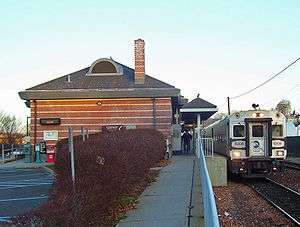
Although not yet past the Draft Environment Impact Statement stage, a study of enhancing service on and extending the Danbury Branch would include additional stations in North Danbury (Federal Road), Brookfield, and New Milford.[46] The draft EIS was due by 2010, and the final EIS by 2011.[47] The Spring 2009 Update for the first time held out the possibility of extension all the way to Pittsfield, MA, the original route of the New Haven Berkshire Division. Trackage rights would have to be negotiated with the Housatonic Railroad, which owns the line beyond Danbury to New Milford.
Enhancements to the Danbury Branch being studied also include re-electrification of the branch (the branch was electrified from 1925 to 1961), addition of passing sidings, realignment and/or super-elevation of track to eliminate or alleviate curvature and enhance speeds, and installation of automated train control signalling. The new signal system finally began operation in 2013, but extensive work was still ongoing in 2014 because of unresolved problems with the drop gates at grade crossings.[48][49]
Earlier versions of the study examined service to Newtown and Brewster along the Beacon/Maybrook line, as additional branches off the Danbury Branch. These options were not recommended due to limited ridership potential versus additional cost.[50]
Penn Station Access
Also being studied is access to New York Penn Station over the Hell Gate Line of the Northeast Corridor, owned by Amtrak. Trackage rights and union agreements would have to be negotiated for this service. Commuter service over this line, formerly the Harlem River Branch of the predecessor New Haven, ended in 1931. New stations contemplated would be at Hunts Point, Parkchester – Van Nest,[51] Morris Park, and Co-Op City.
This project was dormant from approximately 2002 to 2009, but an environmental assessment was announced by Metro-North, to be completed by 2011. The study was in conjunction with ongoing studies for the best uses of Penn Station. The study advances a single option of full (both peak and off-peak) service to Penn on the New Haven and Hudson Lines. Separate options for off-peak service are still being considered separate from the study, as implementation could take place with existing infrastructure and equipment.[52] However, the project was delayed, so environmental and federal reviews are to be completed by 2017.[53]
Service would not begin until after the opening of Long Island Rail Road's East Side Access to Grand Central Terminal. In a limited form, it already takes place with the Jets/Giants game-day service to the Meadowlands, although it is not intended as service to Penn.[54]
New York Governor Andrew Cuomo stated that he supported the project in his 2014 State of the State address.[53]
Waterbury–Bristol–New Britain–Hartford
As of February 2009, Connecticut legislators were discussing service on an old New Haven passenger line that ceased passenger service decades ago known as the Highland Line, part of the original New England Railroad, also known as the Central New England Railway, both eventual subsidiaries of The New York, New Haven and Hartford Railroad.[55]
Currently, this is a freight-only line operated by Pan Am Railways. Station stops would include two in Bristol, as well as in New Britain, between Waterbury and Hartford. The next step is a preliminary scoping study, which would be followed by environmental studies.[56]
The operation may or may not be a Metro-North extension of the Waterbury branch.
Tappan Zee Bridge / I-287 Corridor
The New York State Department of Transportation, the New York State Thruway Authority, and Metro-North conducted extensive studies concerning the replacement of the deteriorated Tappan Zee Bridge. Proposals for rail connections to the New Haven Line were ultimately rejected as too expensive.
References
- 1 2 "Getting Back on Track: Unlocking the Full Potential of the New Haven Line" (PDF). Regional Plan Association. January 2014. Retrieved April 29, 2014.
- 1 2 3 Westport Historical Society, interpretive plaque, Westport Historical Society Museum, Carriage House, read September 30, 2007
- ↑ Pennsylvania Railroad Technical & Historical Society 1969 chronology
- ↑ Pennsylvania Railroad Technical & Historical Society 1971 chronology
- ↑ "Metro North New Haven Line". 2014-05-02. Archived from the original on May 2, 2014. Retrieved 2016-01-21.
- ↑ Lomuscio, James (March 14, 2012). "Catenary Work Could Cause Delays". WestportNow.com. Retrieved May 20, 2013.
- 1 2 3 4 5 "Abandoned Stations : Bronx Railroad Stations". columbia.edu.
- 1 2 Rich Green's NYC Area Track Map. Retrieved September 11, 2009.
- ↑ "City woman dies of train-crash injuries". The News-Times (Danbury). January 4, 2013. Retrieved April 29, 2014.
- ↑ Donohue, Pete (May 29, 2013). "Investigation widens into death of Metro-North track worker". Daily News (New York). Retrieved April 29, 2014.
- ↑ "72 hurt in Metro-North collision in Conn.; NE Corridor service affected". MyfoxNY.com. Archived from the original on May 18, 2013. Retrieved May 18, 2013.
Officials in Connecticut say it was amazing that there were no fatalities or more injuries after two Metro-North trains collided around 6 p.m. in Fairfield Friday evening.
- ↑ "Full New Haven Line Service To Resume Monday Morning". Metropolitan Transportation Authority. October 5, 2013. Retrieved April 29, 2014.
- ↑ MNCRR New Haven M2/4/6 with Pantograph change and P32AC-DM Express at Pelham [HD]. YouTube. 8 November 2010.
- ↑ Metro-North New Haven Line Yankees-153rd Timetable
- ↑ Economopoulos, Aristide (2009-09-13). "Meadowlands trains-to-game show potential of regional rail". The Star-Ledger. Retrieved 2010-01-09.
- ↑ Take the Train to the Game, MTA, Retrieved November 8, 2015.
- 1 2 Metro-North Meadowlands Brochure: "Take the Train to the Game". Retrieved April 29, 2014.
- ↑ "Introducing Metro-North Service to Meadowlands Football Games" (Press release). Metro-North Railroad. 2009-09-17. Retrieved 2009-10-12.
- ↑ Train Jotting website: Fordham Road
- ↑ "Inner City Press: Investigative Reporting from the Bronx to the United Nations". innercitypress.com.
- 1 2 3 4 5 "Metro North Harlem Line". stationreporter.net.
- 1 2 Connecticut Summary of Major Provisions of Connecticut/Metro-North Rail Car Purchase Agreement
- ↑ Connecticut Rail Map
- ↑ "fenimore road and hoyt avenue mamaroneck ny - Google Maps". google.com.
- ↑ Rail Freight In Connecticut Today
- ↑ Sutherland, et al. Analysis of Harmonics, Flicker and Unbalance of Time-Varying Single-Phase Traction Loads on a Three-Phase System, Paper No. IPST05 - 091. Retrieved December 26, 2010.
- ↑ "The Grand Central Railroad Depot, Harlem Railroad.". The New York Times. October 1, 1871. p. 6. Retrieved 2011-07-04.
- 1 2 "Abandoned Stations : 86 St (Park Ave)". columbia.edu.
- ↑ Penn Central ACMU 1044 at 138th Street Station; May 21, 1972 by Joe Testagrose (WorldNYCSubway.org)
- 1 2 "Melrose Station, in the late 1800's". I Ride The Harlem Line...
- ↑ 1858 New York and Harlem Railroad Map (I Ride the Harlem Line)
- ↑ "time Traveling on Mosholu Pkwy". time Traveling on Mosholu Pkwy.
- ↑ "Westchester County". existingstations.com.
- ↑ "Murals: Scenes from Yesteryear". Stamford Historical Society. Retrieved 2006-08-25.
- ↑ Great American Stations. Accessed March 1, 2013.
- ↑ "Connecticut to purchase 80 more cars for Metro-North line". Progressive Railroading. August 6, 2010. Retrieved March 4, 2011.
- ↑ "Connecticut places order for un-powered M-8 railcars". Trains Magazine. July 20, 2011. Retrieved July 24, 2011.
- ↑ Station Stops website. April 15, 2008
- 1 2 "Waterbury New Canaan Branch Lines Needs and Feasibility Study (Phases I and II)". Connecticut Department of Transportation. January 2010. pp. 7–29 through 7–48. Retrieved 3 August 2014.
- ↑ "New Investments in Waterbury Branch Rail Line - Some Changes in Service and Schedules Required" (Press release). Connecticut Department of Transportation. 16 March 2015. Retrieved 22 March 2015.
- ↑ "Metro-North Makes East of Hudson Service Improvements and Expands Quiet Car Program" (Press release). Metro-North Railroad. 21 March 2016. Retrieved 23 March 2016.
- ↑ Moller, Louisa (16 July 2014). "New Metro North Station Approved For Bridgeport". Fox News CT. Retrieved 3 August 2014.
- ↑ McCready, Brian (July 19, 2011). "Way cleared to fund a train station in Orange". New Haven Register. Retrieved May 21, 2013.
- ↑ Prevost, Lisa (January 30, 2005). "A Mill Town Writes Its Next Chapter". The New York Times. Retrieved April 29, 2014.
- ↑ "State Approves $2 Million Bond For Redding Mill Redevelopment". The Weston Daily Voice. February 3, 2014. Retrieved April 29, 2014.
- ↑ "Danbury Branch Electrification Feasibility Study - Welcome!". danburybranchstudy.com.
- ↑ Danbury Branch Improvement Study Spring Update 2009
- ↑ "Update on the Danbury Branch Grade Crossings". Metropolitan Transportation Authority. March 26, 2014. Retrieved April 29, 2014.
- ↑ "Metro-North's New Spring Schedule Enhances Reliability". Metropolitan Transportation Authority. April 28, 2014. Retrieved April 29, 2014.
- ↑ "Regional Transportation Plan". hvceo.org.
- ↑ "Bronx Neighbors Wants Future Metro-North Stop Named After Area's Distant Past". New York 1 News. Retrieved 2014-01-09.
- ↑ "Press Releases". mta.info.
- 1 2 "Metro-North Penn Station Access" (PDF). mta.info. Retrieved 12 April 2015.
- ↑ "MTA - Planning Studies". mta.info.
- ↑ "Highland Line (Danbury - Waterbury - Plainville - Hartford)". nhrhta.org.
- ↑ "Central Connecticut Communications". Central Connecticut Communications.
External links
| Wikimedia Commons has media related to New Haven Line. |
- Metro-North Railroad - official site
- Route on OpenStreetMap

.jpg)